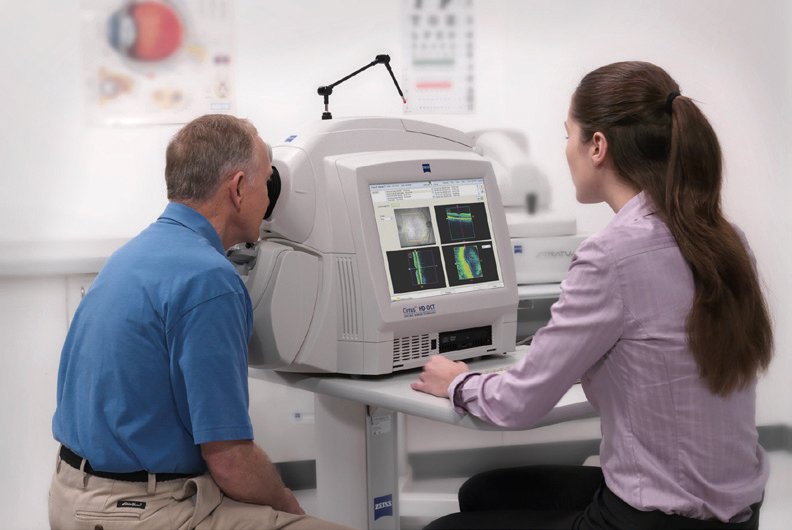
An OCT scan (Optical Coherence Tomography) uses an important piece of technology that allows your optometrist to capture cross-sectional images of your retina, located at the back of the eye.
How does an OCT scan work?
This advanced diagnostic tool uses a scanning laser (an eye-safe near infrared light) to analyse the layers of the retina and optic nerve. Using this technique, the OCT technology is able to capture higher resolution images of the structural layers of the back of the eye. This plays a vital role in the prevention and treatment of eye disease, as tracking the health of your eyes over time allows your optometrist to pick up early signs of eye disease that are not noticeable until the disease has progressed significantly when treatment is no longer possible.
What can I expect?
An OCT scan involves you sitting comfortably in front of an OCT machine, placing your head in a chin rest in front of you. Remaining still, you will look at a coloured light inside the machine which will allow the machine to map the back of your eye safely using harmless light waves similar to a bar code scanner.
Advantages of an OCT include:
- Safe, quick and pain-free
- Non-invasive
- High quality, instant images of the form and structure of the eye tissue
- Baseline for optometrist to monitor eye health over your life
- Usually does not require dilating drops
Do I need an OCT scan?
Depending on the health of your eyes, family history and age, your optometrist might recommend an OCT scan at least every 2 years to monitor your eye health, particularly if you are in a high risk group.
Book an eye test today
75% vision loss is preventable or treatable. Our community of independent optometrists pride themselves on having the latest diagnostic tools so that they can see more, and ultimately give you and your family the best care possible.
Find your nearest optometrist now


